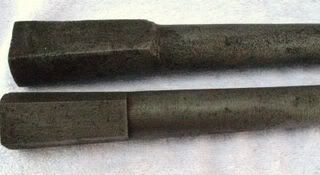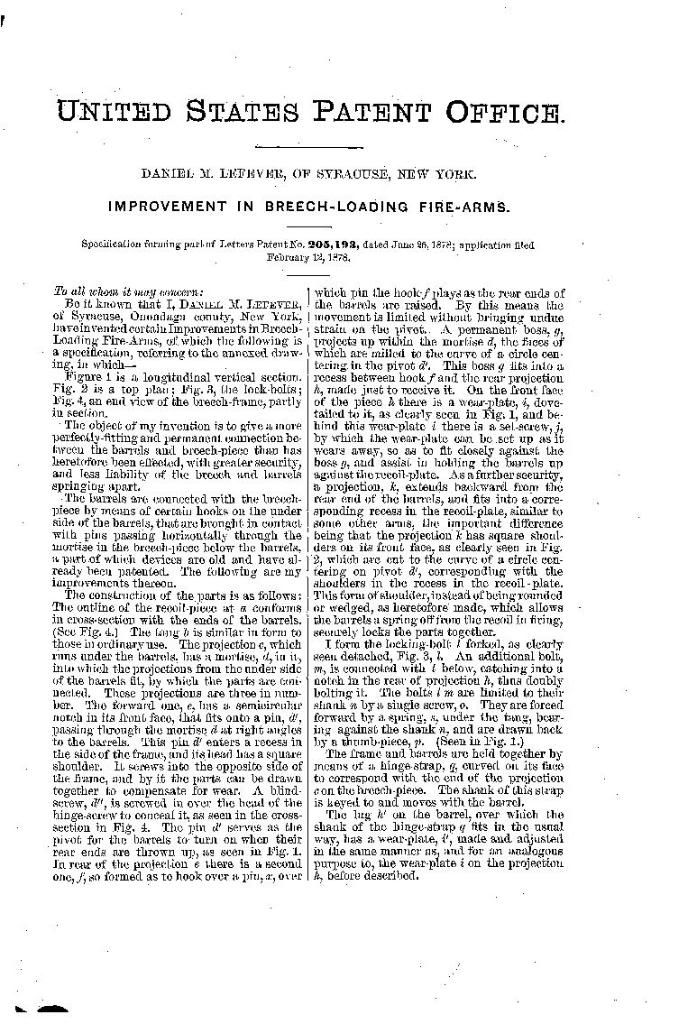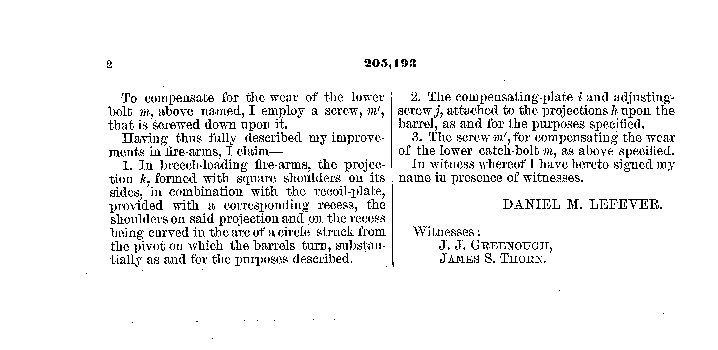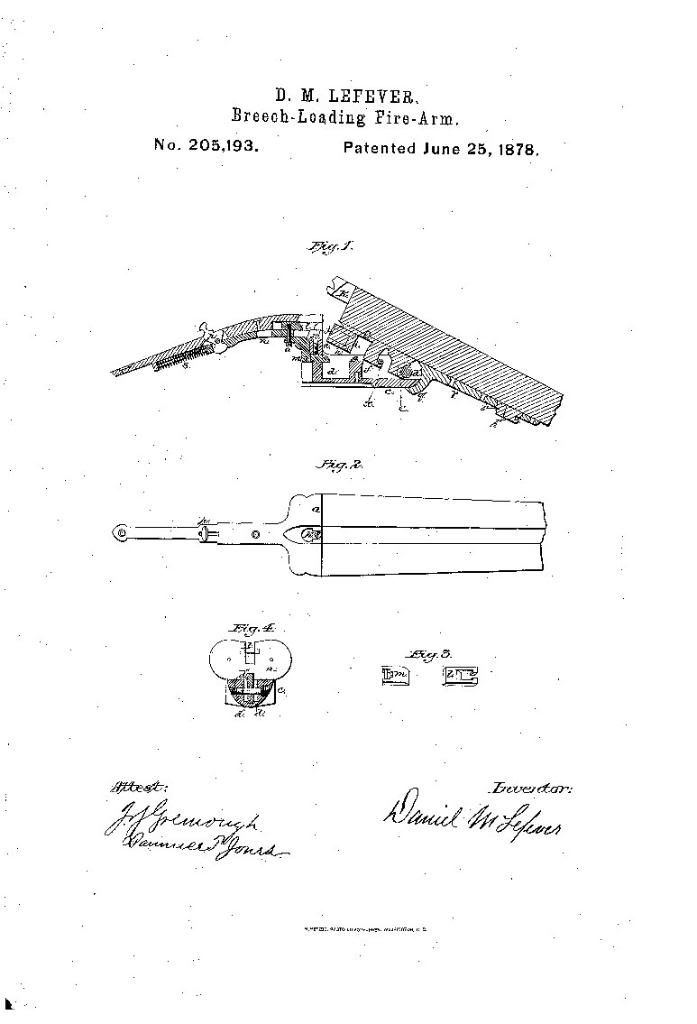Pete;
Thanks for posting page two of the 1881 patent. As I have no reference to an earlier one I am taking this as his original patent. From both the illustrations & the description it is obvious this patent did not describe the bbls being threaded in. As to whether this patent was sufficient to protect against a gun being fitted with a one piece breechpiece with bbls joined by some other method in Belgium I do not know.
I do not believe it would have done so in the US.
Miller,
No problem. It is the earliest one I can find. If it is different from the Belgian version, I can not say. As I can not access the Belgian patents from that period online. Here is the information on the Belgian version -- BE53771 15.02.1181 Invention: genre d'assemblage de canons pour fusils double par Henri Pieper.
Yes, I am aware of the lack of threads. I usually go by that 1897 Sears ad. Assuming they changed the method over time. At least 16 years after filing the patent they had moved to threads.
I have a list of all his patents in French. If there a Pieper patent for a demibloc, I can not locate it on the list.
I have searched the US and European databases for any related patent(s) by Beretta, but have had no luck.
Here is a set of unfinished damascus tubes that I own. It is interesting to see the block at the breech which had to be formed by hand at the anvil. A good argument for going to a monobloc as a monobloc must have taken many hours of out of the process. To my knowledge all the early Pieper Diana guns used damascus tubes. Later versions finally made use of fluid steel. The Diana was marketed heavily here and in Germany. So many thousands of guns are involved.

Note that D M Lefever was issued patent #205,193 on June 25, 1878 for a Doll's Head rib extension having a sq shoulder rather than the normal curved cone. Some time later Remington Arms began using a sq shouldered doll's Head on their doubles. Lefever sued for infringment & lost the case. The basis of his loss was that he had written the patent stating the mating surfaces of the Doll's Head & the recess in the breech were cut on the Arc of a Circle having the hinge as center. Remington won on the fact they had cut their shoulder on a straight line being tangent to the circle rather than a part of it. Lefever argued that the Sq Shoulders were the basis of the patent, not whether it was cut on a arc or straight, but Rem prevailed.
Here is the Lefever patent



Pete